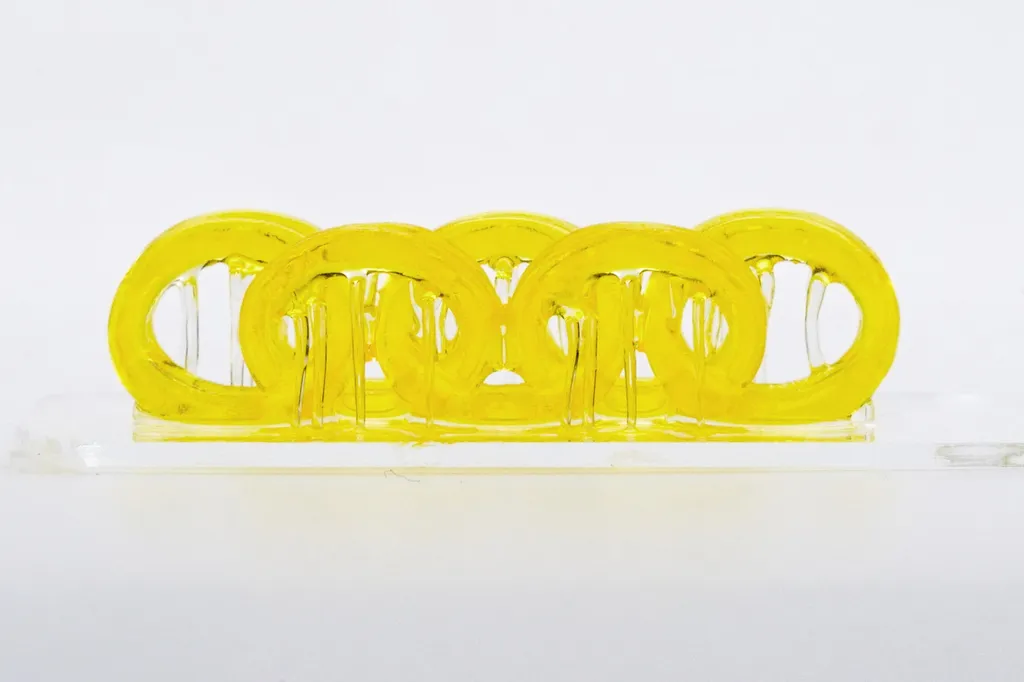In the rapidly evolving world of additive manufacturing, a recent study has shed light on how a simple change in printing orientation can significantly impact the strength and flexibility of 3D-printed parts. This research, led by Juan Sebastián Ramírez-Prieto from the Grupo de Investigación en Desarrollo y Tecnología de Nuevos Materiales (GIMAT) at the Universidad Industrial de Santander in Colombia, could have profound implications for industries relying on 3D printing, including the energy sector.
The study, published in the journal *AIMS Materials Science* (which translates to *Applied Interdisciplinary Materials Science*), focused on the effects of raster angle—the direction in which the 3D printer deposits material—on the tensile and flexural strength of parts made from polylactic acid (PLA+) filament. By testing three different raster angles—parallel (0°/0°), grid (0°/90°), and crisscross (45°/−45°)—Ramírez-Prieto and his team uncovered critical insights into how these angles influence the mechanical properties of the final product.
One of the most striking findings was that the parallel raster angle (0°/0°) produced the highest flexural strength. This is because the fibers align perpendicular to the applied load, enhancing the part’s ability to withstand bending forces. “The alignment of the fibers plays a crucial role in determining the load capacity of the printed components,” Ramírez-Prieto explained. “When the fibers are oriented perpendicular to the applied load, they can bear more stress before failing.”
However, the crisscross orientation (45°/−45°) showed a different advantage: greater ductility. This means the material can undergo extensive plastic deformation before breaking, absorbing more energy in the process. “The crisscross orientation allows for favorable shear deformation dynamics, which enhances the material’s ability to deform without failing catastrophically,” Ramírez-Prieto noted. This property could be particularly valuable in applications where flexibility and energy absorption are prioritized over sheer strength.
In tensile testing, the parallel raster angle again proved superior in terms of strength, while the grid and crisscross orientations showed progressively lower values. The study also revealed that samples printed with a 45°/−45° raster angle tended to fail along the raster orientation due to the development of shear stresses. This insight could help engineers design parts that are less likely to fail under specific loading conditions.
For the energy sector, these findings could be a game-changer. 3D printing is increasingly used to create components for renewable energy systems, such as wind turbine blades and solar panel mounts, where both strength and flexibility are critical. By optimizing the raster angle, manufacturers could produce parts that are not only stronger but also more adaptable to the dynamic forces they encounter in real-world applications.
The research also highlights the importance of understanding and optimizing process parameters in additive manufacturing. As Ramírez-Prieto pointed out, “Choosing the right raster angle can significantly improve the quality and mechanical characteristics of the final product.” This could lead to more efficient and cost-effective manufacturing processes, reducing waste and enhancing the performance of 3D-printed components.
Looking ahead, this study could pave the way for further research into how other process parameters, such as layer height and printing speed, interact with raster angle to influence the properties of 3D-printed parts. It also underscores the need for industry standards and guidelines to ensure consistency and reliability in additive manufacturing.
In an era where 3D printing is revolutionizing industries, this research serves as a reminder that even small changes in the printing process can have a big impact. As the energy sector continues to embrace additive manufacturing, insights like these will be invaluable in driving innovation and improving the performance of 3D-printed components.

